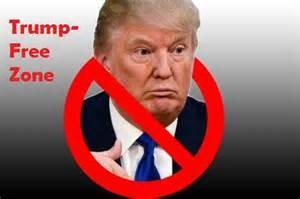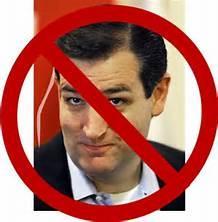
 In spite of the high voter turnout there is a lack of enthusiasm for both of the leading GOP candidates that was on show in the primary in next-door Wisconsin. A lack of enthusiasm was responsible for the failure of Mitt Romney in 2012. A different way of saying essentially the same thing is that Trump - and Cruz - have high unfavorability ratings in polls.
In spite of the high voter turnout there is a lack of enthusiasm for both of the leading GOP candidates that was on show in the primary in next-door Wisconsin. A lack of enthusiasm was responsible for the failure of Mitt Romney in 2012. A different way of saying essentially the same thing is that Trump - and Cruz - have high unfavorability ratings in polls.Once again we are being treated to unsubstantiated accusations that Cruz 'stole' Trump's election. Trump never had a likely win in Wisconsin. I will be the first to acknowledge that Cruz has used dirty tricks, but it's not like Trump is any more honest in his campaigning than Cruz either. Both have a record of playing dirty.
To be fair, Hillary Clinton has a higher unfavorability level than is healthy for her success in either the primary or the general election too, but they are nowhere near as high as Trump's. And typically a higher turnout benefits Dems in ways that don't have appear to hold true for Republicans.
It is true, at this point, Trump has more delegates than Cruz and Kasich combined; Kasich isn't going to get out of the race ahead of the Ohio convention. Because he has so many more delegates, he believes, he FEELS, the nomination is his -- another example of faulty right wing entitlement he has persuaded his supporters to share with him.
The WaPo has an excellent map here of the voting distribution by candidates; Kasich did not win a single county.
However many of Trump's supporters who are aggrieved, it won't make a significant difference to those who disapprove of him. And the level of enthusiasm won't give him a guaranteed win - Trump appears to demand a so-called coronation that he is not likely to get.
Even before the Wisconsin primary, Trump has been making some false statements that his supporters were turning out record numbers of voters; NEW voters. No surprise, that doesn't appear to be the case if you look at the findings of Factcheck.org. Factcheck.org correctly analyzed the numbers, while Trump was misrepresenting those figures.
Trump Touts GOP Turnout
In making the case for his electability in the general election, Donald Trump said that when it comes to primary voter turnout so far “the Democrats are down 35 percent, whereas the Republicans are up over 70 percent.”
- By Robert Farley
- Posted on March 22, 2016
Actually, both Republicans and Democrats are seeing higher primary voter turnouts compared with 2012.
But in fairness to Trump, a comparison with 2008 makes more sense, given it was the last time both parties had contested primaries at this stage. And by that measure, Trump is nearly accurate, according to an analysis by the Pew Research Center of primary voter turnout for each party going back to 1980.
But 2008 was an outlier for Democrats, far outpacing primary voter turnout over the last several decades. With the exception of 2008, Democratic turnout this year is higher than any year since 1992. Meanwhile, Republican primary turnout is the highest it has been going back to at least 1980, when Pew began tracking primary voter turnout.
As for Trump’s larger point, experts warn there is no evidence that high primary turnout leads to general election success.
Trump made his claim about primary voter turnout on ABC’s “This Week,” in response to a question about the possibility of a brokered convention and whether the Republican Party ought to give Trump the nod even if he falls short of the 1,237 delegates needed to secure the nomination on a first ballot.
...The analysis also found that in four of five elections, the party with the larger raw increase in primary voter turnout from the previous election lost the popular vote in the general election. And in terms of percentage change, the party whose primary turnout improved the most won the popular vote in the general election only two out of five times.
There are examples that back up Trump’s point, such as in 2008, when very high Democratic turnout preceded a Democratic victory in the November general election. But there are as many instances when the reverse happened. In 1988, for example, Democrats had a much higher primary turnout than Republicans, but the Republican, George H.W. Bush handily defeated the Democratic nominee, Michael Dukakis, in the general election.
In other words, Burden said, “There’s no relationship at all.”
Sometimes, high primary turnout is driven by enthusiasm for opposing candidates in a tight race. That was the case in 2008 when voters were choosing between the potential for the first woman president or the first African American, Burden said. Other times, though, it can be a sign of party turmoil, which can spell trouble in a general election, he said.
Republicans are setting records now for primary turnout, Burden said, and some of that is enthusiasm for the candidates. But some of it, he said, is being driven by a desire among some to stop Trump from getting the nomination.
